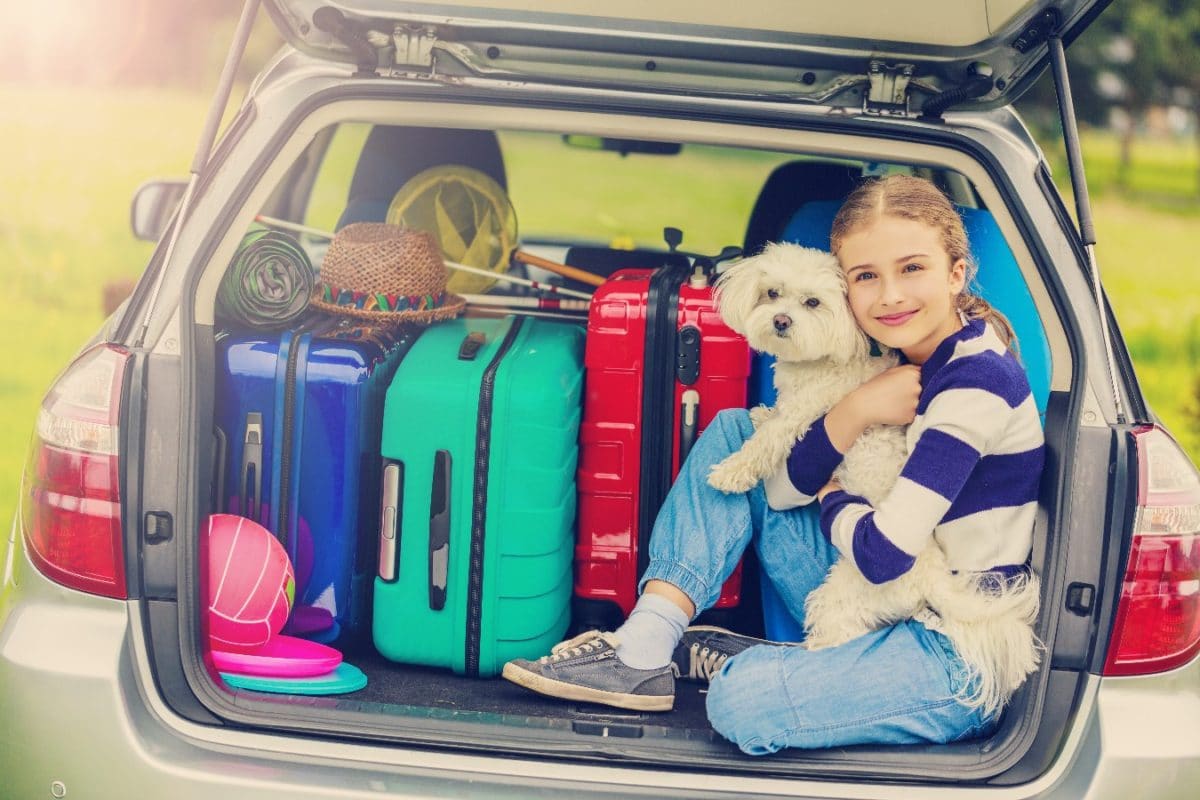Everything, Cats, Dogs, Pet Care
Transportation and Travel with Cats
Cats are happiest when they’re at home. But on occasion, we need to transport them for short trips to the veterinarian or longer trips when we’re moving. How do we make the trip as comfortable as possible for our homebody pets?
Choose a good pet carrier
Cats don’t like being confined, but they do like to feel secure. A pet carrier with solid walls helps your cat feel protected. In addition to providing ventilation, holes in the sides and a grated door allow your cat to see some of her surroundings while she’s in the carrier.
Make sure that the door latches securely and that the carrier is sturdily built. A handle on the carrier makes it easier to carry and to fasten to a car seat.
Soft-sided carriers are easier to store and to stow under an airplane seat if you’re flying and your cat is allowed in the cabin with you. However, walls that can fold in on the cat while she’s in it can create a frightening experience. If you choose a soft-sided carrier, look for one with walls that don’t collapse too easily, and see how your cat adjusts to it before using it for travel. In most situations, a hard-sided carrier may be a better choice for your cat.
Get your cat accustomed to her pet carrier or harness
If you wait until the day that you and your cat need to go somewhere before introducing her to the pet carrier, your cat will naturally be resistant. Instead, leave the pet carrier out where she can go in and out of it when she pleases. Since cats like to be higher than ground level, it may appeal to her more if you place it on a table or somewhere else off the ground. Put treats or even food in it so that she’ll associate good things with it. With her favorite blanket in the carrier, she may even choose to take naps in it.
After she’s used to her pet carrier, close the door for short periods when she’s in it and walk around with it, being careful to minimize the motion she feels. Give her a treat and plenty of attention afterwards to keep the associations with the pet carrier positive.
If you’re traveling by air, the airline may require you to use an airline animal crate. You can still help your cat become accustomed to being confined beforehand, and you can bring a favorite blanket to put in the flight crate.
If you’re taking your cat just to the veterinarian or another local destination and your cat isn’t difficult to restrain, a harness and leash may work fine. Get your cat used to wearing and being restrained by the harness at home, and check that the harness straps won’t slip if your cat pulls hard to get away.
Get your cat accustomed to car travel
If your cat is a kitten when she joins your family, take her for occasional trips in the car so that she can get used to the sounds, smells, and sensations of car transportation. She may not enjoy it the way dogs do, but if she experiences it enough, particularly when she’s young, she’ll be less stressed about traveling in a car.
Make your cat comfortable for the trip
Make the pet carrier comfortable for your cat. A familiar blanket will provide psychological as well as physical comfort. A favorite toy will add to the comfort level. If you’ll be traveling for more than a short distance, include a bowl of your cat’s usual food and water in a water dispenser.
Don’t put anything heavy or large in the pet carrier — it could injure your cat or cause her to panic when the carrier moves. Also avoid blankets with a weave or holes large enough for your cat’s claws to get caught in.
Help your cat stay calm. Cats can sense when their people are stressed. Stay calm around your cat, and be sure to keep her indoors for several hours before you need to put her in her pet carrier.
When you pick up or interact with your cat, be gentle. Assure her with your voice that everything is fine. Don’t sedate her unless it’s really necessary to do so. If your cat becomes agitated easily, discuss sedation with your veterinarian before the trip.
Give your cat identification
No transportation method is 100 percent safe. In the unlikely event that your cat gets out of her carrier or harness, or that the carrier gets lost in transit, have your cat wear an ID tag with a phone number that you can be reached at. If she has an identification tattoo or a microchip, she’ll be identifiable even if the ID tag is lost.
Keep a current photo of your cat on-hand in case you need it.
Travel by air with cats
Traveling by air is risky for animals — airline cargo holds aren’t designed for live creatures.
Each airline has its own regulations about transporting animals. Some allow small pets in the cabins, some allow animals only as cargo, and some don’t transport animals at all. Those that do allow pets may require a specific type of pet carrier.
If you need to transport your cat by plane, see these pages for more information on flying with pets:
Related articles at this site
- Moving Home with Dogs and Cats
- Including Your Pets in a Disaster Plan
- Travel with Dogs


